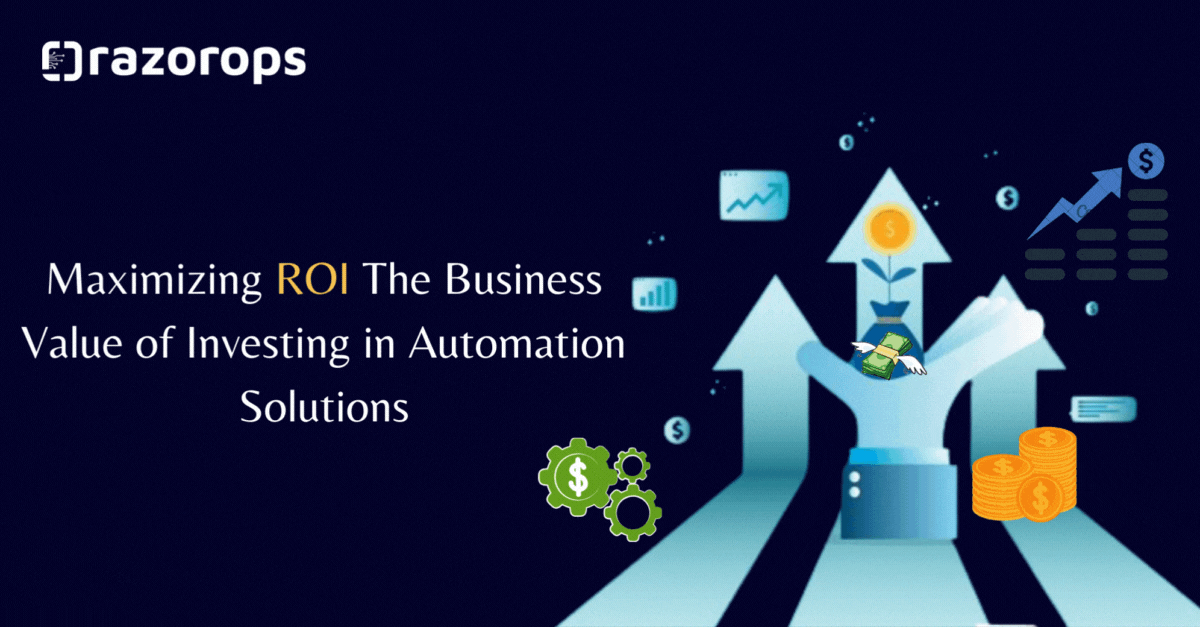Maximizing ROI The Business Value of Investing in Automation Solutions

Business environment, maximizing return on investment (ROI) is crucial for staying competitive and achieving sustainable growth. One area that has proven to be highly effective in driving ROI is investing in automation solutions. Automation not only streamlines processes and increases efficiency but also brings tangible business value across various aspects of an organization. Let’s delve into the key reasons why investing in automation solutions is essential for maximizing ROI.
1. Increased Efficiency and Productivity
Automation eliminates manual, repetitive tasks, allowing employees to focus on high-value activities that drive innovation and growth. By streamlining workflows and reducing human errors, businesses can achieve higher productivity levels and accomplish more in less time. This increased efficiency translates directly into cost savings and improved ROI.
2. Enhanced Accuracy and Consistency
Human errors can be costly and impact the quality of products or services delivered. Automation solutions ensure accuracy and consistency in tasks such as data entry, reporting, and compliance, leading to higher customer satisfaction and reduced rework. The ability to deliver error-free results consistently contributes to a positive brand reputation and long-term ROI.
3. Scalability and Flexibility
As businesses grow and evolve, scalability becomes a critical factor in maximizing ROI. Automation solutions are designed to scale with the organization’s needs, whether it’s handling increased transaction volumes, expanding into new markets, or adapting to changing regulatory requirements. The flexibility offered by automation enables businesses to respond quickly to market demands and opportunities, driving revenue growth and profitability.
4. Cost Savings and Resource Optimization
Investing in automation reduces operational costs associated with manual labor, such as salaries, training, and overhead expenses. By optimizing resource utilization and eliminating waste, businesses can allocate resources more efficiently and invest in areas that generate higher returns. Automation also minimizes the risk of costly errors and non-compliance issues, further enhancing cost savings and ROI.
5. Data-Driven Decision Making
Automation solutions provide real-time insights and analytics, empowering businesses to make data-driven decisions that drive business value. By leveraging data for predictive analysis, optimization, and strategic planning, organizations can identify opportunities for growth, mitigate risks, and stay ahead of the competition. Data-driven decision making is a key driver of ROI, as it enables organizations to optimize processes, improve customer experiences, and drive revenue growth.
6. Competitive Advantage and Innovation
In today’s digital era, businesses must innovate and differentiate themselves to remain competitive. Automation enables organizations to innovate faster by accelerating time-to-market for new products and services, optimizing customer experiences, and continuously improving operations. By gaining a competitive advantage through automation, businesses can capture market share, attract new customers, and drive sustainable growth and profitability.
7. Customer Satisfaction:
Automation plays a crucial role in enhancing customer satisfaction by ensuring prompt responses, personalized interactions, and efficient service delivery. From automated customer support to self-service portals, businesses can create seamless experiences that build customer loyalty and drive repeat business.
8. Adaptability and Innovation:
Automation empowers businesses to adapt quickly to market changes and embrace digital transformation initiatives. By automating workflows, integrating systems, and leveraging emerging technologies like artificial intelligence (AI) and machine learning (ML), organizations can innovate faster, drive continuous improvement, and stay ahead in today’s dynamic business landscape. Follow RazorOps Linkedin Page Razorops, Inc.









